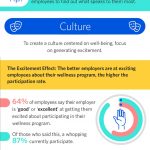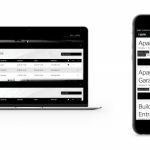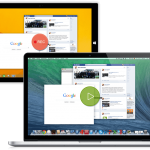Why The Open Office Might Not Actually Be The Workplace Of The Future
At college, you probably had open working environments all over campus—in the library, in dorm common areas, in social centers. Ironically, your first job may look strikingly similar to some of those spaces—and it’s intentional. In recent research by global manufacturer KI Furniture, 75% of employers recognized that collegiate design can have an influence on workplace design. And indeed it has—almost 70% of U.S. workplaces, which are increasingly filled with college graduates, have an open layout.
But what’s the real thinking behind open offices? We asked employers and millennials for feedback.
Community And Collaboration Matter—A Lot
According to office design expert Jonathan Webb of KI Furniture, millennials value community and collaboration, just as they did in college. “We know that newly hired graduates’ top desires are the latest and greatest technology and a sense of community and collaboration,” says Webb. “Companies that cannot offer these two things are at risk of not being able to attract the talent they require to succeed.”
For Taro Fukuyama, the founder and CEO of employee-happiness company AnyPerk, communal spaces foster overall job satisfaction. “From my experience, I’ve learned that recognition, transparency, and personal connections are a few of the key drivers of employee happiness, especially for millennials,” she says. “I strongly believe an open work environment encourages all three of these, so it makes sense that an open work environment would be an important factor for millennial job seekers as well as the businesses employing them.”
But Are Open Offices Too Exposed?
Opponents of the open office model often cite a pressure to look busy. Without a wall, anyone and everyone can see what you’re doing (or not doing). “If there are a few empty chairs when the CEO walks in, it creates the impression that no work is getting done,” says Ben Piper, owner of a consultancy firm in Atlanta.
Exposed offices also make it difficult to concentrate, especially with work that requires intense focus, or speaking to others on the phone. This was the case for Laura Munoz in her inside sales job at Groupon after college. “I loved feeling part of that community, but as an inside sales rep, I hated having people listen to all of my conversations,” she says. “It was to an extent nice to pick up sales tips from listening to others, but it really made me act differently—either carefree or totally nervous. And of course there was the occasional private conversation that you wish you didn’t hear.”
Although an open office can make it more difficult to concentrate, it also creates more of a sense of community, according to Sidnee Schaeffer, senior strategist and millennial at RevUnit, an agile software design and development shop based in Bentonville, Arkansas. “I think the benefits outweigh the downfalls,” she says. “It’s a much more pleasant environment when you aren’t looking into a sea of cubicles. Suddenly people become more approachable and transparent.”
Millennials Want It Both Ways
Since open offices may foster collaboration, and cubicles provide a distraction-free environment to get work done, why not have both?
Melissa Pont, millennial and digital media specialist at Amazing.com, an Austin-based business that helps entrepreneurs succeed, has worked in six different environments. “My best experience was being in an environment with many small offices that fit one to three people, as well as a pit where the client managers worked,” she says. “Because my job at the time required a lot of concentration, having that space made me feel like I had a home. And if I wanted to collaborate with peers, I could spend time in the pit or other collaboration spaces.”
David Bild, millennial and cofounder of Tellur Inc., a Chicago-based banking notification company, seconds Pont, saying that a blended model is his workplace of choice. “An ideal office setup would have small private offices where workers can minimize outside distractions, shared open-work spaces to use temporarily when the energy of having everyone around is helpful, and plenty of conference-style rooms for discussions to reduce noise in the open spaces,” he says. “A fully open layout is a major strike when I’m evaluating potential jobs. I know I can’t fully contribute in a bullpen environment.”
If the work environment is something you feel strongly about, don’t be afraid to say so. During a phone interview with a potential employer, ask what their office floor setup looks like; or if your interview is in person, ask to see where you’d be working. “It’s entirely possible to have functional work environments with either layout,” says John Chapin, software development consultant at Capital Technology Services, a web development company in Philadelphia.
Not only will you be able to judge if the workplace is somewhere you could feel comfortable, asking to see where you’d be working shows initiative—the employer will literally see you in the space you’d work.
This article originally appeared on Monster and is reprinted with permission.
Fast Company , Read Full Story
(14)













